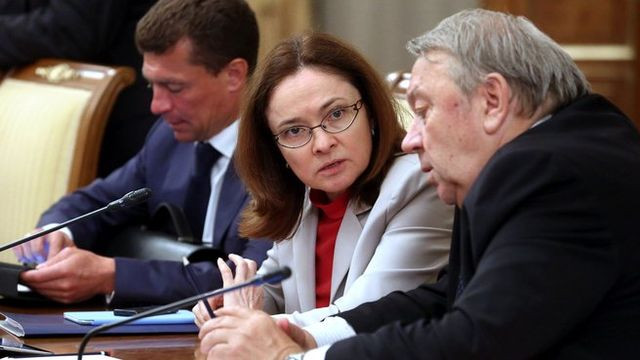Russia's central bank raised its key interest rate to 21% on Friday, a drastic move aimed at controlling surging inflation driven by increased government spending, particularly on the military. This 200 basis point hike takes the rate to its highest level since February 2003, surpassing analysts' expectations of a 100-point rise. The bank's decision comes amid ongoing inflationary pressures, fueled by both domestic demand and external economic challenges linked to the war in Ukraine.
The Russian economy has been struggling to manage inflation, which far exceeded the central bank's forecasts in recent months. In September, annual inflation hit 9.8%, up from 7.5% in August, well above the bank's initial prediction of 6.5-7.0%. The central bank now expects inflation to be in the range of 8.0-8.5% by the end of 2024. Governor Elvira Nabiullina indicated that the central bank's board had considered raising the rate even higher and left open the possibility of further hikes in December. "We are not ruling out further increases," she said, reflecting the institution's hawkish stance as it navigates a challenging economic environment.
The war in Ukraine and the resulting sanctions have placed considerable strain on Russia's economy, particularly as the nation faces restricted trade and reduced global demand for its oil exports. Military spending has become a significant driver of inflation, as the government continues to pump resources into the war effort. This has created an imbalance, with domestic demand far exceeding the economy's ability to supply goods and services, pushing up wages and prices. The central bank's statement emphasized that "growth in domestic demand is still significantly outstripping the capabilities to expand the supply of goods and services."
Russia's central bank raised the interest rate to 20% in February 2022, shortly after the country's invasion of Ukraine triggered a wave of sanctions. Since then, the bank has implemented a series of rate adjustments in response to fluctuating inflationary pressures, but Friday's hike is the most significant since those early days of the conflict. This latest increase is designed to slow inflation by making borrowing more expensive, thereby reducing consumption and investment. However, such measures also carry the risk of stifling economic growth.
Russia's economy grew by 4.4% in the second quarter of 2024, with unemployment remaining low at 2.4%. Despite these positive indicators, the country faces mounting challenges, especially in its industrial sectors. Factories are running at full capacity, often producing military goods or replacing foreign imports that have been disrupted by sanctions. The International Monetary Fund (IMF) has warned that Russia's economic growth is likely to slow, projecting GDP to fall from 3.6% this year to 1.3% by 2025, as private consumption and investment are expected to decline.
Oil revenues have played a critical role in propping up Russia's economy, even as sanctions have attempted to curb its ability to sell on global markets. Despite a $60 price cap imposed by Western nations, Russia has managed to circumvent these restrictions by using its own fleet of tankers and securing non-Western insurance. In July alone, Russia earned an estimated $17 billion from oil exports, helping to fund both its domestic and military expenditures. However, the volatility of global oil prices and the impact of sanctions continue to pose risks to the country's economic stability.
The central bank's actions are part of a broader effort to keep inflation under control, but they come at a cost. Higher interest rates make it more expensive for businesses to borrow, potentially slowing down investment and growth. Analysts have expressed concern that while the rate hike may help curb inflation in the short term, it could also lead to a contraction in the economy if businesses and consumers pull back on spending.
Governor Nabiullina acknowledged these risks but stressed the importance of stabilizing prices over the medium term. The bank expects inflation to fall to 4.5-5.0% by 2025 and 4.0% by 2026, though achieving these targets will require navigating both internal pressures and external shocks. Russia's continued involvement in Ukraine and the uncertain geopolitical landscape make forecasting the country's economic trajectory particularly challenging.






